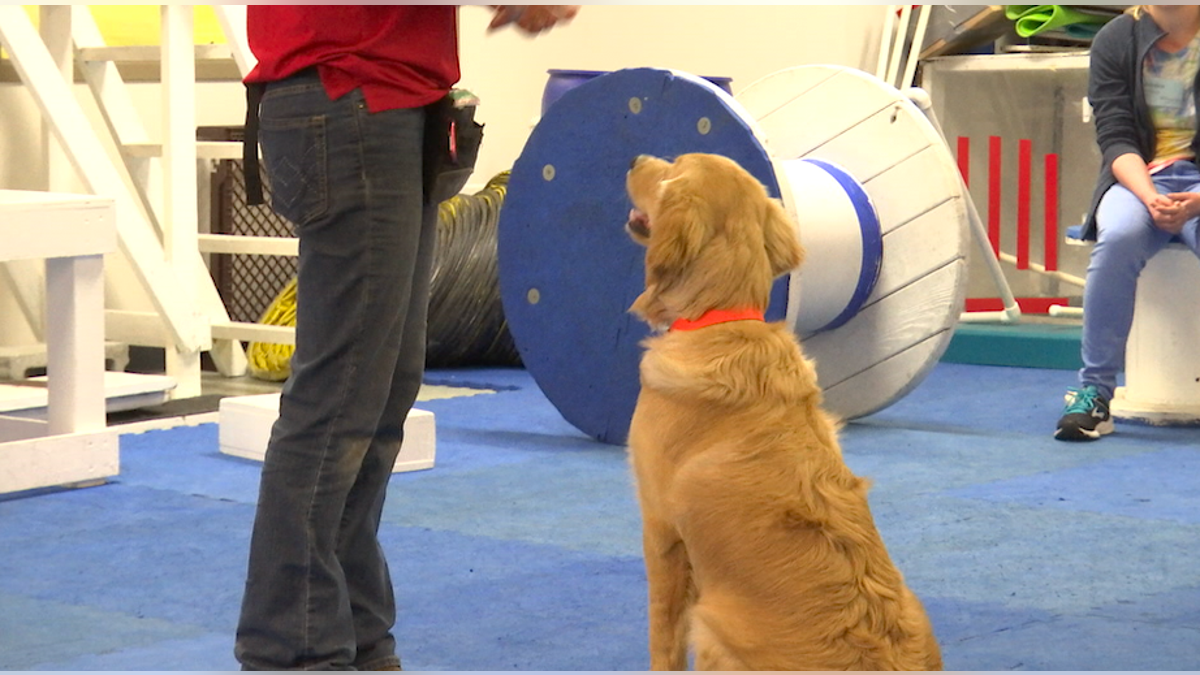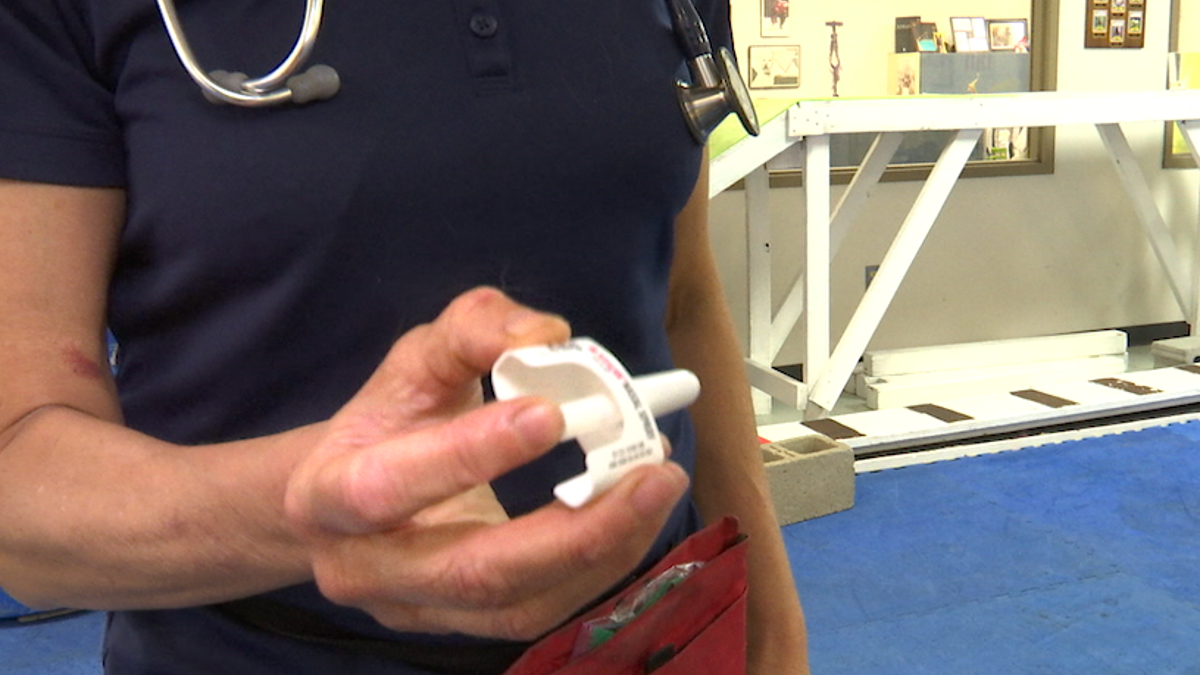K-9 dogs risk their lives to sniff out opioids
EMT respondents unable to perform lifesaving actions on furry heroes
PHILADELPHIA – K-9s are an important tool in the fight against opioids – but as a result of their effort, they are dying.
Drug-sniffing dogs sent out to look for opioids are overdosing themselves, according to veterinarian and law enforcement officials who are trying to figure out ways to save them. While law enforcement officials are trained to help users who overdose, for a long time they didn’t know how to detect the symptoms in the dogs they use to locate the drugs.
“This is a really big issue,” said Cynthia Otto, director of the University of Pennsylvania’s Working Dog Center, “lots of these canine officers are exposed and their handlers don’t even know what an overdose looks like [in these animals].”
Otto’s team is hoping to change that. She and her group of trainers and veterinarians have been leading research to examine the effect opioid exposure has on the canine members of law enforcement teams and developing best practices for handlers.
The issue grew more urgent when three police dogs in South Florida overdosed on fentanyl, which is 50 times more powerful than heroin, during a federal drug raid while sniffing around a suspect’s home, according to NBC News. The case underscored the growing problem of how canines can overdose during a routine sweep – and how officers are not always properly trained to detect the symptoms.

The Penn Vet Working Dog Center serves as a national research and development center for detection dogs. (Fox News)
It is unclear how many K-9s have overdosed from opioids because there is no agency collecting that data, officials said.
"The problem is that there is no mandatory reporting, no centralized database and nowhere for handlers to report that their dog has been affected,” said Dr. Maureen McMichael, a veterinarian physician and founder of Working Dog HQ, a non-profit designed to collect data on working dogs in order to advocate for new animal care laws. "We don't have hard numbers. No one does, not even the U.S. government."
At the facility in Pennsylvania, dogs arrive at eight weeks old and go through an extensive training course for 12 to 18 months that prepares them for searches.
"We teach them to sit and stare when they identify a find," said Bob Dougherty, a dog handler at the center. "We don't want the dogs sniffing through the drugs, for their safety."

Naloxone is a medication designed to rapidly reverse opioid overdose. It is an opioid antagonist—meaning that it binds to opioid receptors and can reverse and block the effects of other opioids. (Fox News)
Each dog reacts differently when exposed, but Otto says there are some key indicators to look for.
“Dogs may go through an excitatory phase, they might actually start panting and they may pace around,” she said. “It sort of depends on the dog’s personality, too.”
Otto said some of the older, more laid-back dogs may be “down for the count” after only minutes of exposure. While younger more energetic dogs may become increasingly more excited.
Fentanyl is a drug commonly used by veterinarians. When injected intravenously it's considered safe for animal sedation or pain.
“Dogs are not as sensitive to opioids as humans are,” said Otto, adding that it takes 20 times the dose to create anesthesia for a dog as it would a human. “If a dog is showing sign of opioid intoxication, that means they were exposed to a really big dose.”
Surprisingly, dogs have the same opioid receptors as humans, which means the same medications can be used to reverse an overdose. In a hospital setting, Naloxone is injected intravenously, blocking the effects of the opioid and eventually reversing it. On the field, more and more officers are carrying the intranasal spray to protect both themselves and their four-legged partners.
Acquiring the spray has been challenging for some forces.
"The wording is subjective," McMichael said. "So some pharmacies will not allow officers or units to purchase the medication for animal officers."
Only four states Illinois, New York, New Jersey and Maryland will allow working dogs to be transported to an animal hospital via an ambulance. Ohio and Colorado are just two states that allow EMS technicians to provide care to working dogs. New York currently has a pending bill to become the first state to allow both access to care and transportation for working dogs.
“Dogs are not as sensitive to opioids as humans are,” said Otto, adding that it takes 20 times the dose to create anesthesia for a dog as it would a human. “If a dog is showing sign of opioid intoxication, that means they were exposed to a really big dose.”
Surprisingly, dogs have the same opioid receptors as humans, which means the same medications can be used to reverse an overdose. In a hospital setting, Naloxone is injected intravenously, blocking the effects of the opioid and eventually reversing it. On the field, more and more officers are carrying the intranasal spray to protect both themselves and their four-legged partners.
Acquiring the spray has been challenging for some forces.
"The wording is subjective," McMichael said. "So some pharmacies will not allow officers or units to purchase the medication for animal officers."
Only four states -- Illinois, New York, New Jersey and Maryland -- will allow working dogs to be transported to an animal hospital via an ambulance. Ohio and Colorado are just two states that allow EMS technicians to provide care to working dogs. New York currently has a pending bill to become the first state to allow both access to care and transportation for working dogs.


